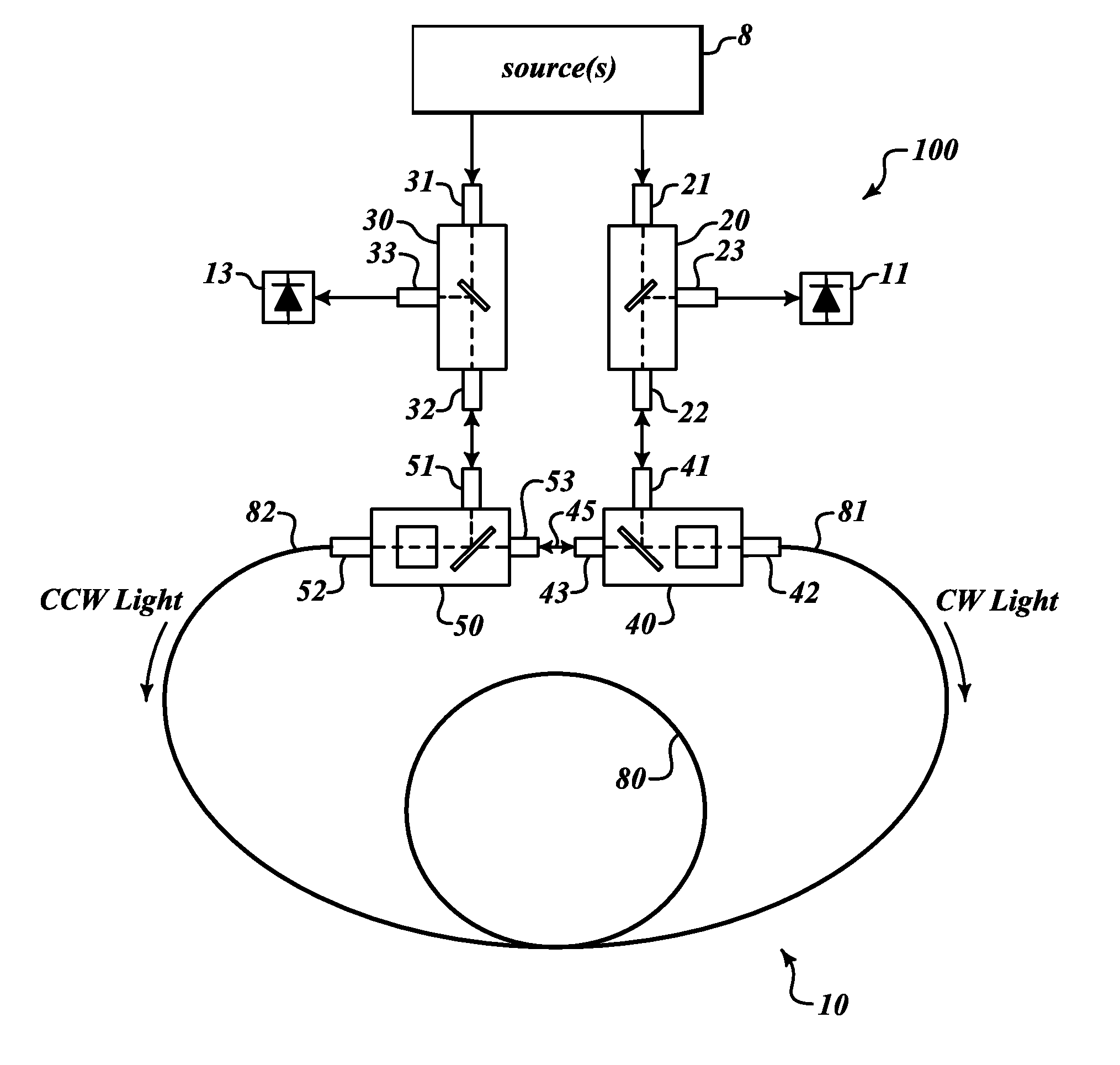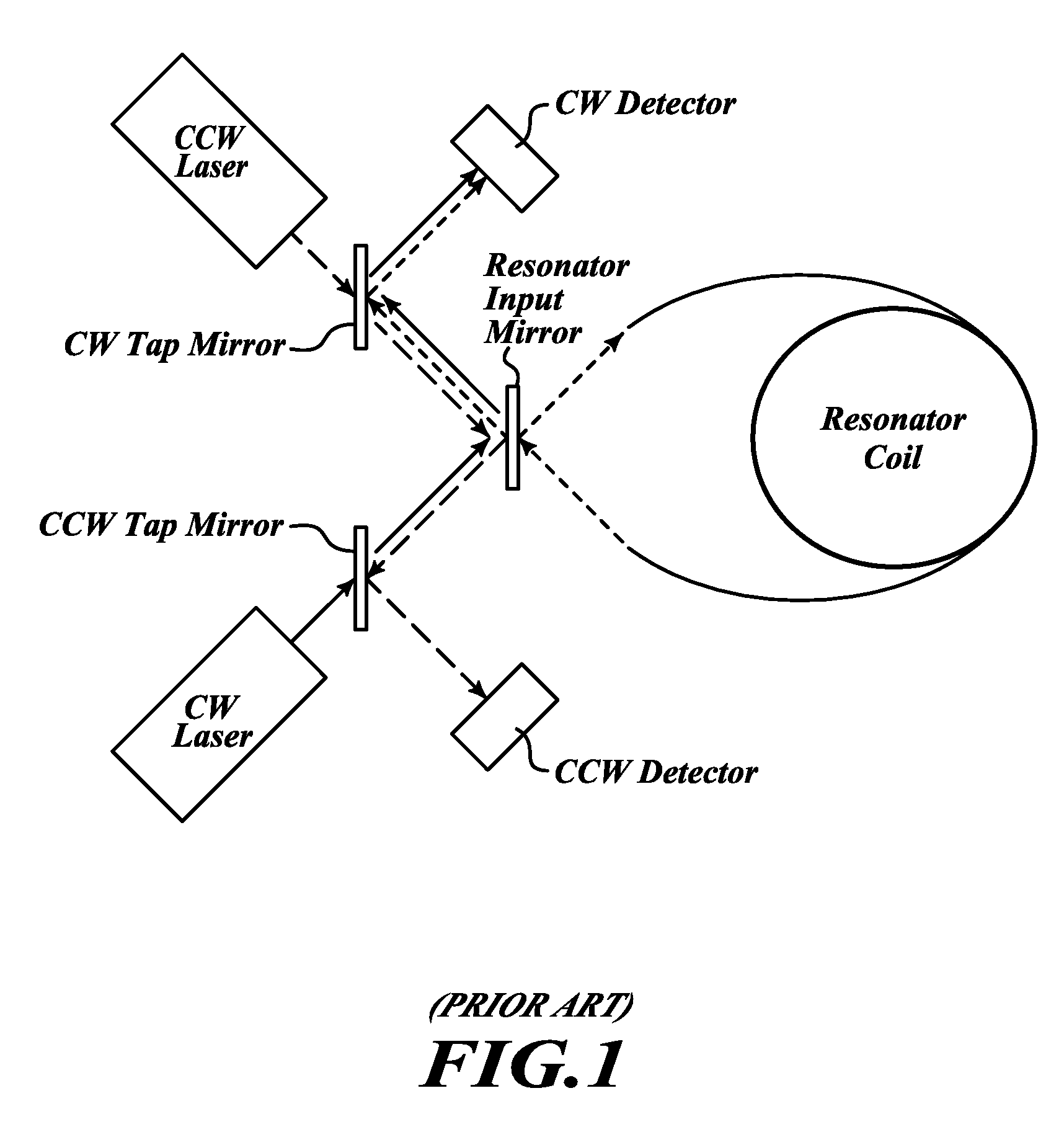Compact resonator fiber optic gyroscopes
a fiber optic gyroscope and compact technology, applied in the field of compact resonator fiber optic gyroscopes, rotation rate measurement apparatus, can solve the problems of large rotation sensing error, interference between reflected light and resonator output light on the cw detector, and errors in rotation rate measuremen
- Summary
- Abstract
- Description
- Claims
- Application Information
AI Technical Summary
Benefits of technology
Problems solved by technology
Method used
Image
Examples
Embodiment Construction
[0035]FIG. 4 shows a resonator fiber optic gyroscope (RFOG) 100 formed in accordance with an exemplary embodiment of the present invention. The RFOG 100 includes light source 8, directional optical components 20 and 30, resonator input / output coupling optical components 40 and 50, detectors 11 and 13, and a resonator 10 including a fiber loop 80. The light source 8 emits at least two beams of light: a beam of light for a CCW direction and another beam of light for the CW direction. Alternatively, light source 8 could include two independent light sources one providing light for the CCW direction and the other for the CW direction. Each of the directional optical components 20 and 30 includes an input port 21 and 31, an output port 22 and 32, and a detector port 23 and 33. A substantial portion of light received by the input port 21 and 31 is directed to the output port 22 and 32 but prevented from entering the detector port 23 and 33. In a reverse direction (indicated by an up-arrow...
PUM
 Login to View More
Login to View More Abstract
Description
Claims
Application Information
 Login to View More
Login to View More - R&D
- Intellectual Property
- Life Sciences
- Materials
- Tech Scout
- Unparalleled Data Quality
- Higher Quality Content
- 60% Fewer Hallucinations
Browse by: Latest US Patents, China's latest patents, Technical Efficacy Thesaurus, Application Domain, Technology Topic, Popular Technical Reports.
© 2025 PatSnap. All rights reserved.Legal|Privacy policy|Modern Slavery Act Transparency Statement|Sitemap|About US| Contact US: help@patsnap.com



